Astronomical Distances in Perspective
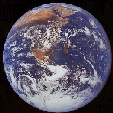
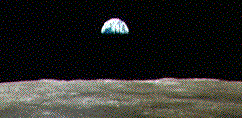
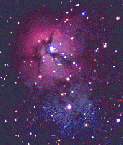



Living on the surface of the Earth as we do, it is really difficult to fathom how
big the Universe is, even our local part of the Universe known as our Solar System
(the sun and its immediate surroundings). Oh sure, we can measure these distances
and assign numbers to them--the moon orbits some 240,000 miles (384,000 kilometers)
from Earth,
and the Earth averages some 93 million miles (150 million kilometers) away from the
sun. But what are such distances like on a scale we might be able to understand?
If we squished the Earth down to the size of a good-sized orange or a baseball (about
3 inches in diameter), and scaled everything else down by the same factor, how big
would the moon be and how far away from our `orange' Earth? Well, the moon is a
little less than a third the diameter of the Earth, so something like a ping pong
ball would
be about right. And as for distance away, would it be a few inches? A foot? If
you calculate it, the ping pong ball orbits about 6.7 feet (just about 2 meters)
away from the orange!
Now let's compare this to a typical space shuttle orbit. The space shuttle, of course,
is unable to go to the moon, even though it does go into "outer space." However,
you might be surprised to find out that the space shuttle only ventures out to a
couple of millimeters (less than a tenth of an inch!) up off the surface of the orange!
On this same scale, the sun would be a big "beach ball" about 26 feet
(8 meters) in diameter and would be more than half a mile away!
To take things out another step, we have to adjust the scale. Let's take our beach
ball sun and shrink IT down to the size of the orange.
Then Jupiter, the largest planet in our solar system, is about the size of a cherry
pit, orbiting at a distance of some 260 feet from the orange, while Pluto, the most
distant planet, is a mere grain of sand orbiting 1050 feet (three and one-half football
fields) away! (If you have a big open area near your school, it would be a fun class
project to build a scale model solar system!) On this same scale, the
next nearest star, which in reality is 4.3 light years (or about
25 trillion miles) away, is another
orange-sized object at a distance of 1460 miles! (That's about the distance from
Baltimore, MD, to Dallas, TX!)

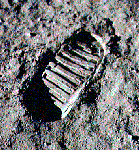
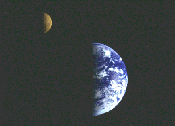
These examples should make the accomplishments of sending people to the moon and back
or sending space probes to the other planets dramatically clear. However, if we
want to learn about the distant stars and galaxies, it should also be clear that
we can't do so by going there or sending a space probe. The only
way we can learn about the distant reaches of the Universe is to analyze the
light these distant objects send to us across the unfathomable void
of space. This is one thing that makes astronomy unique as a science: the only
thing we can bring into our laboratory for analysis is light. But there is
more to light than meets the eye!
Click here to go to next section.
Return to Spectroscopy Home Page.
Teachers click here for more distance analogies and activities.
Bill Blair ([email protected])